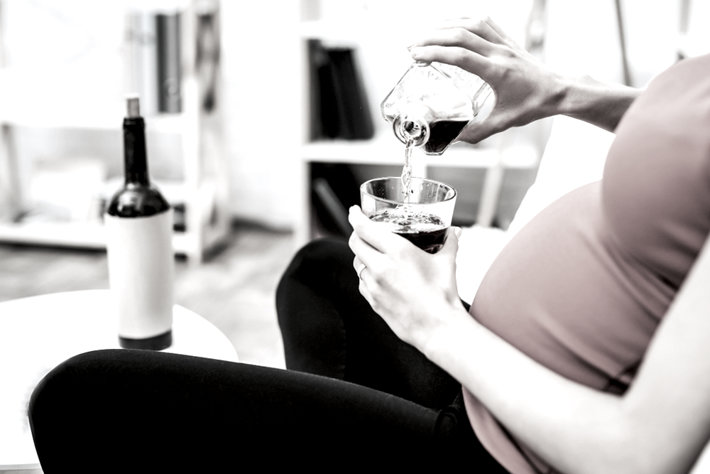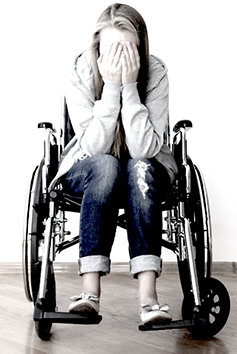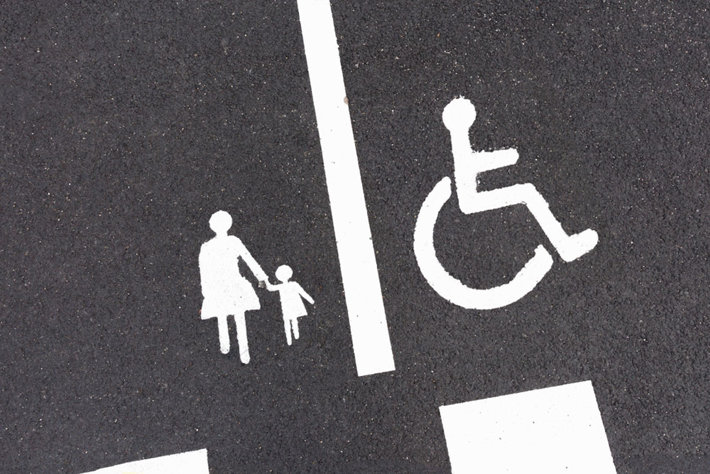New Study Reveals Staggering Costs of Alcohol’s Effects During Pregnancy

It’s now understood by most women that drinking alcohol during pregnancy can have very harmful effects on the developing child. These effects are summed up under the name “fetal alcohol spectrum disorders” or FASD.
The word “spectrum” indicates that there is a range of symptoms and diagnoses included under the FASD umbrella. The symptoms of FASD vary greatly and vary from mild to devastating. Diagnosis of FASD involves looking for the following symptoms:
Physical signs
- Vision or hearing problems
- Heart, kidney or bone disorders
- Small heads
- Short height
- Low body weight
- Poor coordination
- Motor skill delays
- Flat area instead of a ridge between the nose and upper lip
- Short nose
- Thin upper lip
- Sleep problems as a baby
Behavioral or intellectual signs
- Learning disabilities
- Speech delays
- Difficulty in school, particularly with math
- Poor reasoning or judgment skills
- Low IQ
- Hyperactive behavior
- Inability to think with consequences
- Changeable emotions and inability to manage own emotions
- Not self-motivated
- Lack of remorse

Children or adults suffering from FASD exact a financial toll on their families and their communities as they require more care than unaffected children. This care can include special education facilities, increased healthcare costs, productivity losses for caregivers, early mortality of these children, residential care, and even justice-system costs. A New Zealand analysis found that individuals with FASD were 19 times more likely to be incarcerated. The most seriously affected children or adults can require residential, around-the-clock care. Milder cases may not be accurately diagnosed which will mean that they will not get the care that enables them to learn to function as optimally as possible.
A New Analysis Compiles the Real Costs
A new study published in the Journal of Addiction Medicine showed how astronomical the costs of FASD really are. These costs are largely invisible unless someone collects them up as these researchers did because they simply blend into medical, education, justice and welfare costs around the world.
The researchers examined studies of FASD costs from four developed countries: the United States, Canada, Sweden, and New Zealand. Based on the statistics from these counties, they calculated that, worldwide, an estimated 630,000 children are born with FASD each year.
When the researchers calculated the costs of care for these individuals, they concluded that children with FASD required $23,000 annually in special costs and adults require $24,000 in special care.
That doesn’t sound like so much money until you consider the bigger picture.
To take a look at the worldwide situation, let’s run a few calculations.
Just so we can work with some manageable numbers, let’s imagine we are starting with zero children affected by FASD. (Of course, there are actually millions of people affected—both those who have been diagnosed and those who have not been.)
In our first year, we would have 630,000 babies born with FASD, costing the world economy $14.5 billion in special costs.
In the second year, we have an additional 630,000 babies born with FASD, meaning that we now have 1,260,000 children affected by this condition and $29 billion in costs.
Year three: 1,890,000 children and $43.5 billion in costs.Year four: 2,520,000 children and $58 billion in costs.
Year five: 3,150,000 children and $72.4 billion in costs.
Skipping down to year ten: 6,300,000 children and $145 billion in costs.
Preventing FASD’s Effects

One of the sad things about FASD is that it is 100% preventable. But perhaps the saddest thing about FASD is that children who never did anything wrong suffer because their mothers drank during pregnancy. Those mothers may not ever have been educated about the harm alcohol could do while they are pregnant so didn’t know to avoid alcohol. Other women may have known but not cared. And still, others could not stop themselves from drinking even though they knew it could hurt their babies because they were addicted to alcohol.
This year, a new study showed that an increasing number of women are consuming alcohol, with the number of women experiencing damaging levels of alcohol consumption increasing nearly 84% between 2002 and 2013. Every time a woman in her child-bearing years becomes addicted to alcohol, there is a chance that a baby will be born with FASD.
This very sad situation means that it is vital that women of child-bearing ages who are addicted to alcohol get the help they need to stop drinking. Greater education is also needed for all young women who might engage in risky sexual activities while intoxicated. These young women need to realize the risks not only to themselves but to the babies they might conceive during these episodes.


 ®
®